This document summarizes the case of a female grey seal whose blood samples were submitted to a clinpath unit in April 2009. The summary includes:
1) The samples lacked details on the seal's age or clinical history.
2) Reference ranges for grey seals were found in the BSAA manual, while ranges for some analytes came from harbour seals.
3) Possible causes of abnormalities in the seal's biochemistry include dehydration or renal disease.
4) First aid for seals often involves fluid therapy to address dehydration, as seals presented for care are often pups in need of rehydration.

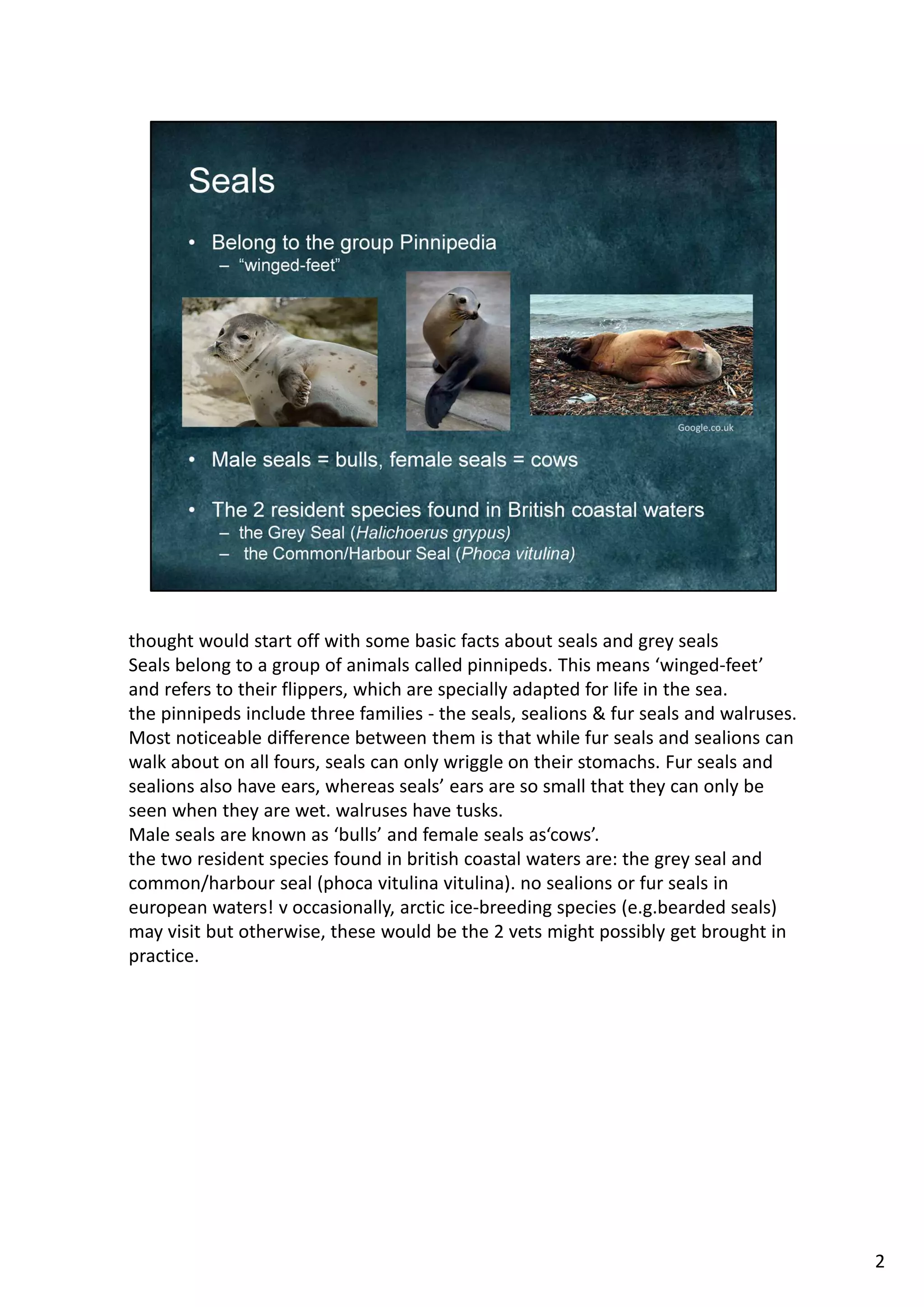

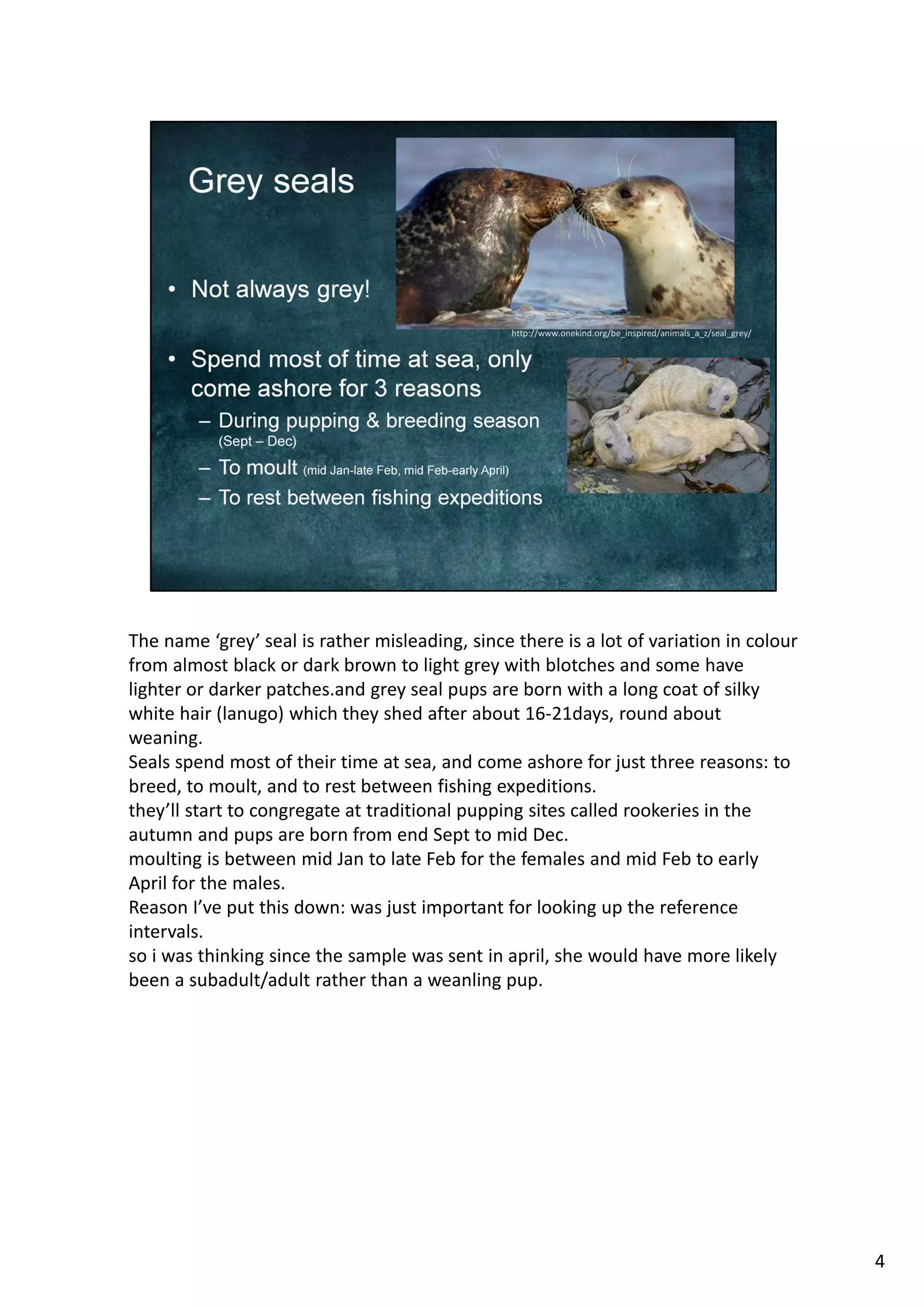


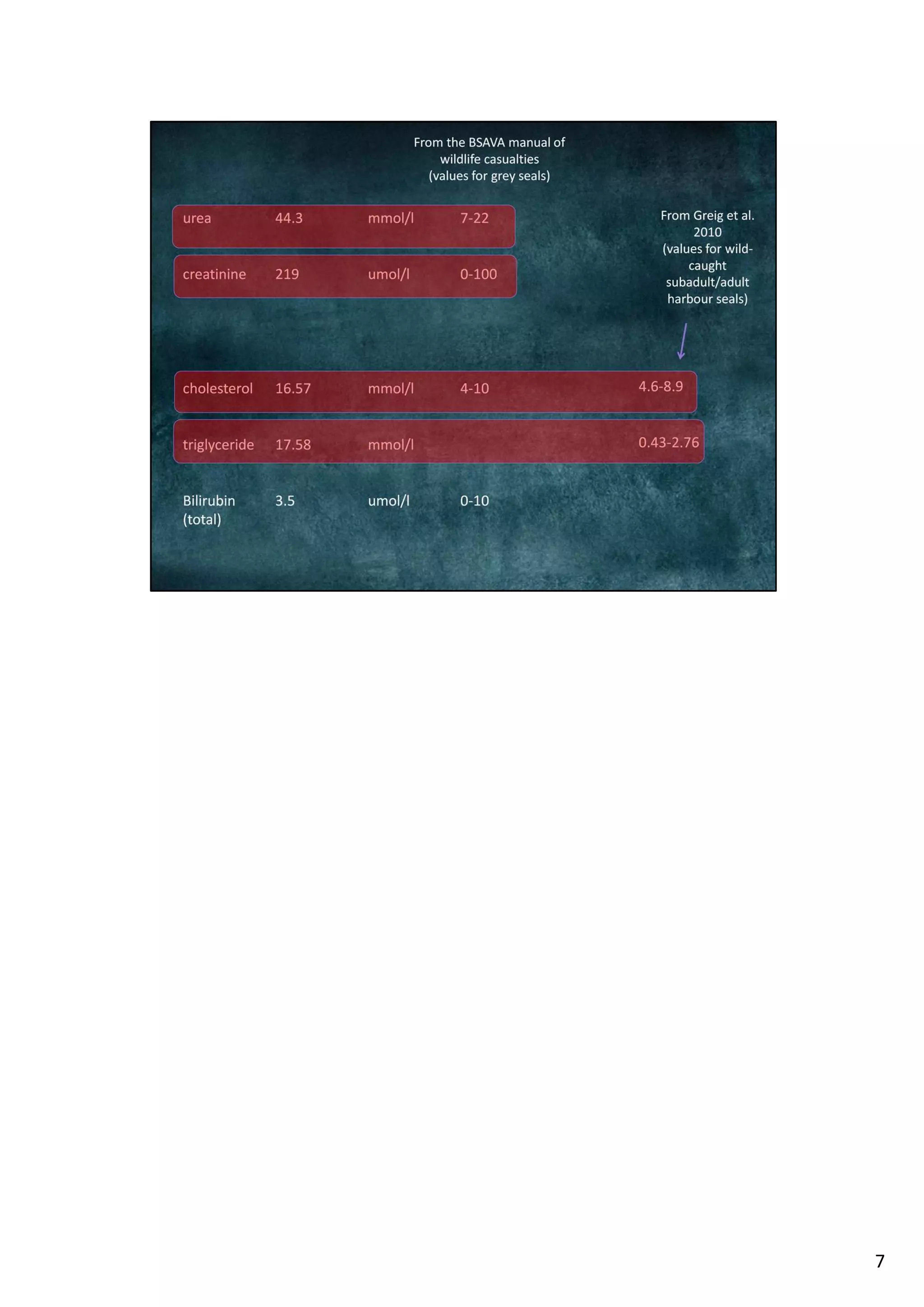
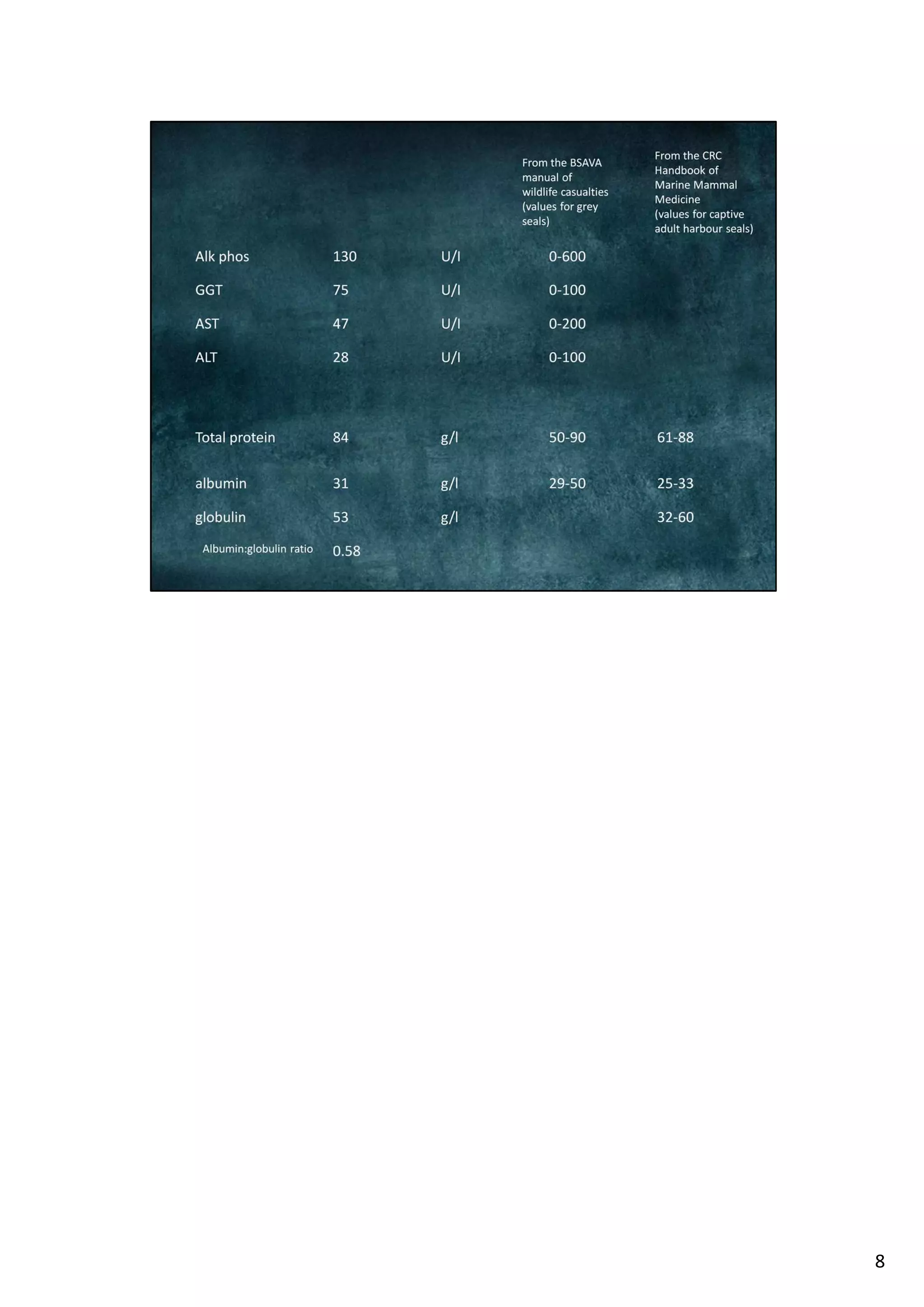
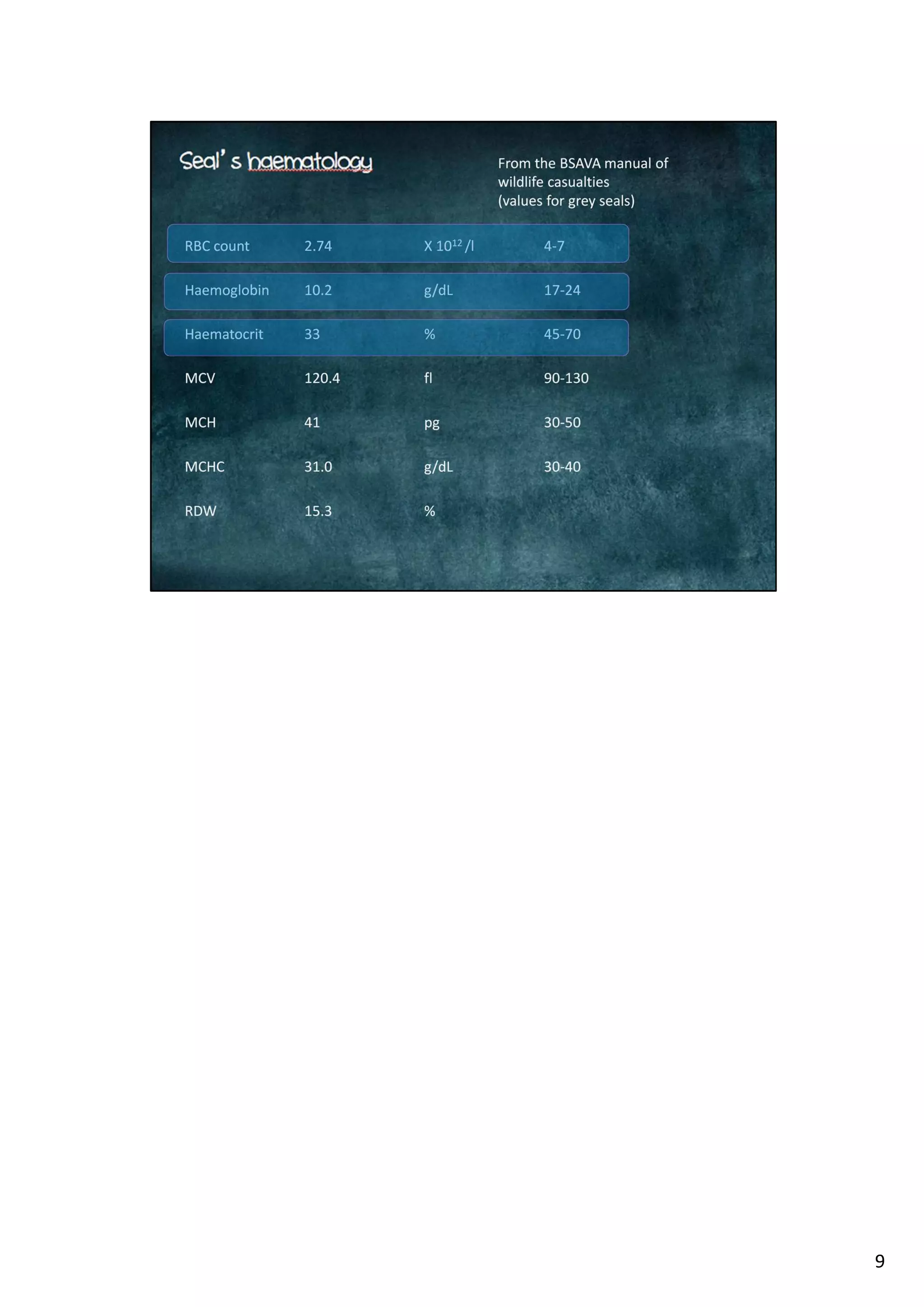








![for grey seal pups
-additional glucose can be given where hypoglycaemia is suspected.
-tubing ever 3-4h.
If severely debilitated - can give IVFT using blood sampling sites.
Tight application of the skin to the blubber layer makes it diff to give adq volumes
subcut but it can still be a useful technique.
correct hyperthermia (cold-hosing) OR hypothermia (esp if small and emaciated.
short floats in water only. supplementary heat and towels.)
oral rehydration of adults seals possible only in weaker/moribund animals or if
sedated.
more lively adults can be encouraged to drink from a freshwater pool or hose or
fed fish injected with fluids.
advisable to move all seals to appropriate rehab facilities as soon as intial
assessment and tx have been completed.
17
*Addi%onal*info*about*seal*first*aid/*possible*therapy*for*this*seal*
The*majority*of*seals*brought*into*care*are*pups,*before*or*within*a*few*months*of*weaning.*(This*case*was*probably*a*
subadult/adult*though,*as*men%oned*above).*Important*to*avoid*unnecessary*rescue*of*normal*seal*pups*receiving*maternal*
care.*Recently*weaned*naive*pups*may*occasionally*be*brought*into*care*unnecessarily.*Animal*should*be*carefully*observed*in*
situ*before*the*decision*is*made*to*rescue*it.
What*to*do*if*presented*with*a*seal*pup*for*clinical*assessment?*(Can*broadly*apply*these*to*older*seals*too,*though*seals*that*
weight*over*50kg*may*need*seda%on*or*GA*to*allow*a*full*exam)
FIRST*AID
#1.*Give*fluid*therapy*as*rou%ne*in*the*first*instance.
Seal*pups,*par%cularly*if*malnourished,*are*usually*dehydrated.*
Rrestrain*in*sternal*recumbency
Rproprietary*oral*rehydra%on*solu%on*by*lubricated*stomach*tube*(approx.*1cm*external*diameter)
Rvolume*of*150R250ml*is*appropriate*for*grey*seal*pups
Raddi%onal*glucose*can*be*given*where*hypoglycaemia*is*suspected.*
Rtube*ever*3R4h
If*severely*debilitated,*oral*fluids*ill*advised.
Rcan*give*IVFT*using*blood*sampling*sites.*
R%ght*applica%on*of*seal*skin*to*their*blubber*layer*makes*it*difficult*to*give*adq*vols*subcut*but*it*can*s%ll*be*a*useful*
technique.
Adult*seals:
Oral*rehydra%on*possible*only*in*weaker/moribund*animals*or*if*sedated.*
More*lively*adults*can*be*encouraged*to*drink*from*a*freshwater*pool*or*hose*or*fed*fish*injected*with*fluids.
#2.*Correct*any*hyperthermia*(coldRhosing)*or*hypothermia*(especially*if*small*and*emaciated.*Supplementary*heat*and*towels.*
Allow*only*short*floats*in*water.*)
#3.*Advisable*to*move*all*seals*to*appropriate*rehab*facili%es*as*soon*as*ini%al*assessment*and*tx*have*been*completed.
Several*specific*condi%ons*are*commonly*seen*in*seals*but*the*infec%ous*ones*do*not*really*fit*this*one’s*blood*picture.
Rso]*%ssue*trauma*and*infec%on*and*fractures
Rviral*disease:*morbilivirus,*herpesvirus,*poxvirus
Rbacterial*disease:*sep%caemia*(caused*by*bac*assoc*with*trauma%c*injury*or*pneumonia),*d+
Rparasites:*lungworm,*coccidiosis
Rocular*condi%ons
To*treat*anaemia:
Iron*supplementa%on*with*ferrous*sulphate*could*be*given*
R200mg*orally*bid*
Rdose*can*be*increased*in*nonRregenera%ve*anaemias.](https://image.slidesharecdn.com/clinicalpathologycasepresentation-150426115602-conversion-gate01/75/Clinical-pathology-case-presentation-18-2048.jpg)
